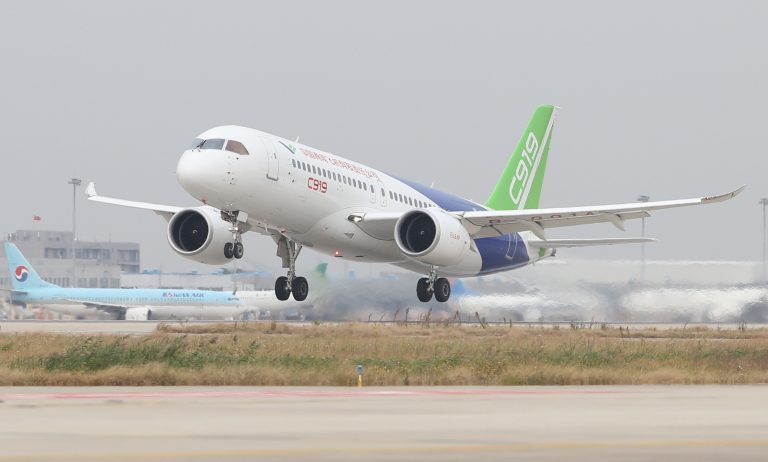Amidst draconian lockdowns and travel restrictions due to surging cases of the novel coronavirus, China is barreling forward with massive injections of capital into its aviation industry in an attempt to compete with its rival, the United States.
Local governments in China are reportedly pouring massive amounts of resources into the country’s aviation industry in an attempt to deliver on Beijing’s goal of self-sufficiency and to establish China as an aviation powerhouse, the South China Morning Post (SCMP) reported.
The number of ‘industrial estates’ dedicated to aviation has grown to a record high in China with 90 being recorded last year, an increase from 39 since 2012, according to data from the Qianzhan Industry Research Institute.
A report, published in June this year by the Tsinghua University stated, “At present, many local governments are actively planning the construction of a general aviation industry base.”
The goal is to develop aviation bases as a way to upgrade regional industrial infrastructure with the goal of transforming local economies. Preferential investment policies are being used to lure businesses to the industry.
Military-civil fusion strategy
Success
You are now signed up for our newsletter
Success
Check your email to complete sign up
“Since the inauguration of the Trump administration, the US has tightened aviation export controls — particularly for Chinese entities — with stricter licensing policies.” SCMP reported.
China is aware that Washington is concerned that Chinese state companies aim to acquire American technology through civilian supply chains for use in Beijing’s military-civil fusion strategy.
The controversial strategy was launched in 2015 “in an effort to get the private sector and state-owned military-industrial players to work together on dual-use technology to help modernise the country’s defence forces.” SCMP reported.
The United States, as well as other international players, vehemently oppose Beijing’s use of western private sector technologies to bolster their military ambitions.
In recent years, China has spent billions in an attempt to reach their goal of transforming its domestic aviation industry. China’s “Made in China 2025” plan was put in place to eliminate China’s reliance on foreign technology and to position its hi-tech industry to compete at an international level.
One example of this plan in action is China’s investment in its home-grown C919 jet, a narrow-body passenger plane fabricated by Commercial Aircraft Corporation of China (Comac). However, many of the components required for the construction of the aircraft are supplied by U.S. and European companies.
The passenger jet has been in the development stage for years but is expected to be certified for wide use by the end of 2021.
Despite China’s ambitions Daniel Prud’homme, an associate professor at Pôle Universitaire Léonard De Vinci in France, believes that “Chinese firms will need to rely on foreign technology for some time to make their own products and services.”
Billions up for grabs
Reminiscent of China’s monetary incentives and policy to create a world class semiconductor industry — which many consider has failed and was grossly exploited — local governments are offering large sums of money to companies willing to take the dive into the aviation industry.
One local government, the Taicang government, has said that it will establish a 2 billion yuan (US$308 million) fund to finance aviation projects and aerospace technology start-ups after announcing it would set up an industrial estate dedicated to the two industries in April.
The Taicang government is also offering a reward of upwards of 10 million yuan (US$1.54 million) for companies that achieve technological breakthroughs, according to a plan communicated via the city government’s website.
The Taicang government flouts their long-term relationships with German companies as advantageous for companies looking to make the city its base of operations.
There is a long incubation period before an aviation company is in the position where it realizes a profit. China’s aggressive gamble, at a time when strict travel restrictions have been widely implemented, may not produce the results they so desperately want to achieve.














